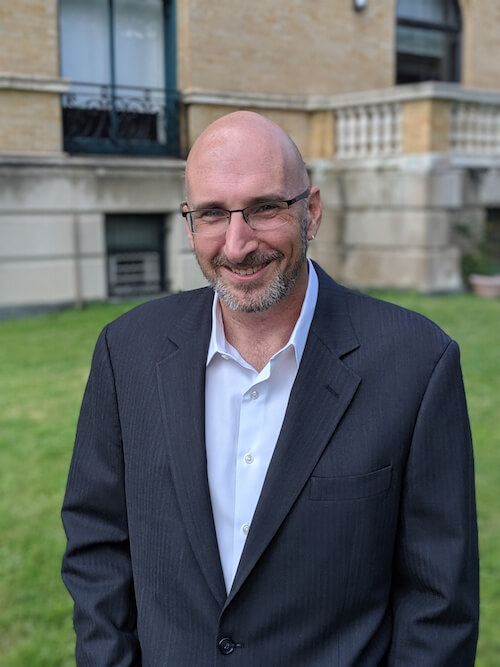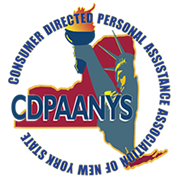What Funders Need to Know About Disability-Inclusive Grantmaking: CDPAANYS
This interview is a Q&A with Bryan O’Malley, Executive Director at CDPAANYS.

As the alarming impact of COVID-19 on people with disabilities (particularly disabled people of color) quickly became clear, the Disability Inclusion Fund (DIF) launched a $200,000 rapid response funding opportunity. The funding provided support for organizations on the front lines serving people with disabilities during this crisis, including mutual aid and support for organizing, policy, and systems-change advocacy. Consumer Directed Personal Assistance Association of New York State (CDPAANYS) was among the recipients of this grant. In the following Q&A, which has been lightly edited for clarity, Bryan O’Malley, executive director of CDPAANYS, shines a spotlight on what the DIF rapid response grant enabled the organization to accomplish and why disability-inclusive funding is more crucial than ever.
Can you share a bit about your work/the work of your organization?

The Consumer Directed Personal Assistance Association of New York State (CDPAANYS) works to increase access to community-based long-term supports and services, specifically the consumer directed personal assistance program (CDPA), through education, awareness, and systems advocacy. Because of the nature of the program, and the fact that CDPA is the only program that was built by folks with disabilities for folks with disabilities, our advocacy work seeks to allow these individuals opportunities to tell their stories, providing them with the skills and resources to tell their story effectively in front of those with the power to create change.
For years, our work has focused in large part on raising awareness of the home care workforce crisis in New York and the factors driving that crisis. As Medicaid and the long-term care sector have faced direct attacks over the past two years, we have moved to build coalitions. First, we created a group that loosely came together in response to over $250 million in cuts to CDPA under the banner #SaveCDPA. As the CDPA specific cuts moved to Medicaid, particularly long-term care Medicaid services in 2020, we joined a diverse set of organizations in an ad-hoc group from diverse perspectives called Protect Medicaid, in a joint effort to collaborate, bringing the message of the importance of Medicaid to the larger community.
As noted, the bulk of our work is done in coalition and collaboration with other organizations. While much of this work is with others in the disability community, we also work with Medicaid Matters, those working on the rights of employees, legal services, and others to ensure that our work includes all of the voices of the impacted.
Can you share a bit about the work your organization has been able to accomplish with the DIF RR grant?
The DIF RR grant CDPAANYS received allowed us to retain media relations firm BerlinRosen. Our work with BerlinRosen has allowed CDPAANYS to amplify our outreach and grassroots efforts and help shape the conversation about community-based supports and services, access, and equity.
As New York was hard hit by the pandemic early on, the national conversation focused here. However, much of that conversation focused on hospitals, and as stories trickled out, nursing homes. Even as the state celebrated its “healthcare heroes,” home care workers were facing cuts and being ignored.
Prior to receiving this grant, CDPAANYS had been working in concert with others to fight budget cuts and lift the voices of consumers regarding this virus. Knowing the harm this virus would cause in nursing homes, particularly among Black and Latinx residents, we made a decision early in the process to focus on nursing homes. This had the dual purpose of trying to resolve the crisis before it happened, by removing people from these institutions, as well as highlighting the advantages that services in the community offer. The organization tracked deaths in nursing homes, and relied on news reports that found that the institutions with a majority of residents of color were also the hardest hit by the pandemic. We also collaborated with other organizations, such as New York Association on Psychiatric Rehabilitative Services, Independent Living, Inc., and Center for Disability Rights, among others, to plead that the state work with us to remove people from congregate settings wherever possible.
We simultaneously worked with our provider members and grassroots base to issue a survey to consumers in CDPA. The survey sought to determine the different ways that the virus was impacting their services.
Because we were able to contract with BerlinRosen, the work we were doing to highlight the problems in nursing homes and CDPA, as well as the potential solutions, became part of the larger conversation. Op-eds were published in The Gotham Gazette and AM New York Metro. These pieces focused attention on the issues CDPAANYS had been bringing to the fore of the discussion. Through social media, we were able to further publicize them and build support for our ideas.
By the time CDPAANYS testified at New York State’s legislative hearings on nursing homes during the COVID-10 pandemic in July, we had helped to implant the narrative in the media. The media team used the hearings as an opportunity to secure broadcast appearances for the organization’s Executive Director to speak to a wider audience about COVID-19, nursing homes, and health disparities. During interviews, we cited CDPAANYS’ COVID-19 survey of consumers, pointing to the high rate at which respondents feared being institutionalized should they lose their personal assistants at home due to the pandemic, and their lack of access to PPE. We also highlighted the CDPA program not only as a safer alternative, but one that was preferred by many immigrants and families of color due to its ability to hire within those families and eliminate language and cultural barriers.
These broadcast sessions began to matriculate into mainstream conversation the narrative that CDPAANYS was promoting: that self-directed, community based services are the safest and most just way to provide long-term care. In an interview with Capitol Pressroom, the host asked Senate Health Committee Chair Gustavo Rivera whether or not the state should examine whether nursing homes should be the future of New York’s system, particularly given their problems related to disparities. Other organizations have since picked up this line as well, and the way in which we talk about long-term supports and services is changing.
Why is it so important for grant makers to center disability inclusion in their work?
When funders center disability in their work, it forces external players to look at the disability community and involve us. Groups, for better or worse, follow the money and will change their work based on what funders want. At the same time, if funders center their work on disability and specifically expect the work of grantees to recognize intersecting identities and fully include multi-marginalized disabled people, it pushes the disability community to be more open and participate in other movements.
If funders insist on putting disabled voices front and center, we can continue to see this growth as a critical part of all movements as they build.
What can funders do to ensure their grant application process is accessible?
There are a number of accessibility experts in the disability community. We would like to see funders engage these experts more in making sure that every phase of applying for grants is accessible. This means that funder conferences and webinars must have ASL interpreters, captioning, and transcription. All documents should be accessible for screen readers. And, importantly, as grantees build networks, they, too, should be required to implement these accessibility measures in their work.
What do you most want funders to know about the overall impact funding has on disability-focused work?
For better and worse, nonprofits are continually evolving their work around funders’ directives and priorities. For too long, even as communities have spoken of the need to focus on intersectionality, the disability community has been left on the sidelines. Conversely, too often parts of the disability community choose to remain siloed, working on the fringes and not seeking to join larger movements.
The simple reality is that, if funders make disability-focused work a priority, nonprofits and states who are seeking those funds will make the disability community a priority. Disability-focused organizations will make intersectionality a priority. Funding has the ability to shape the community and behavior.
